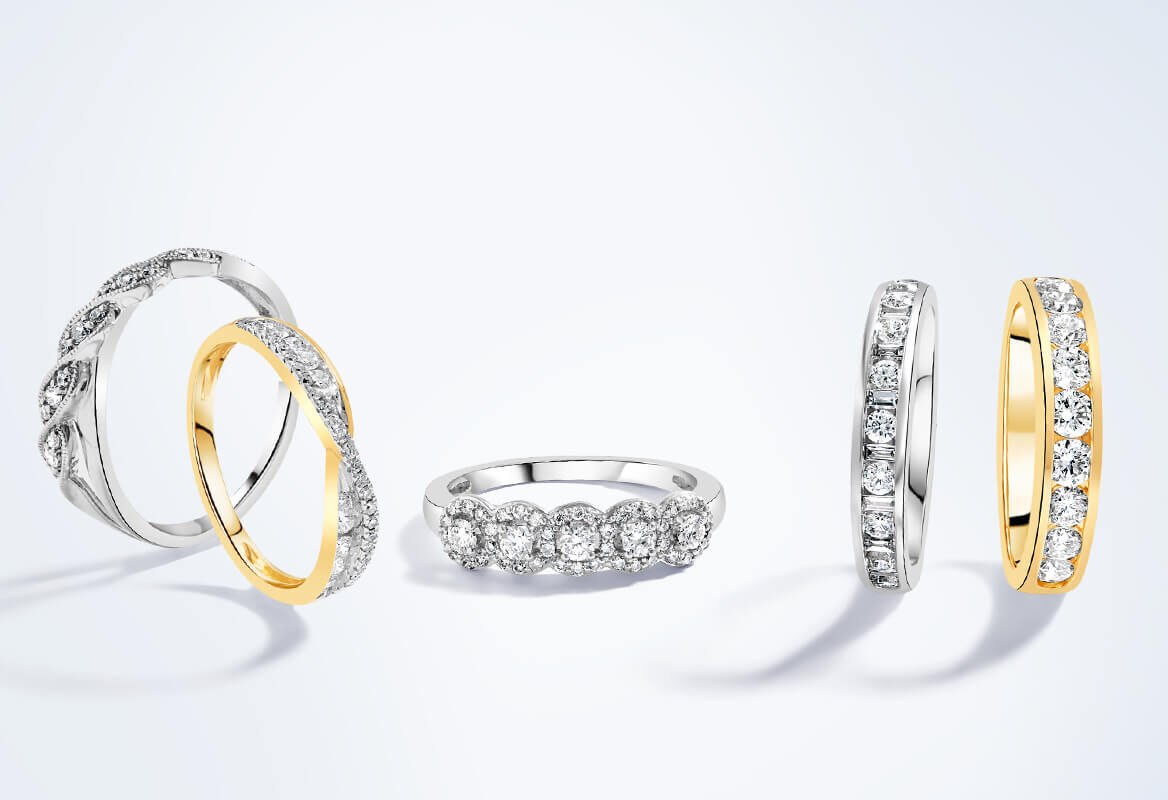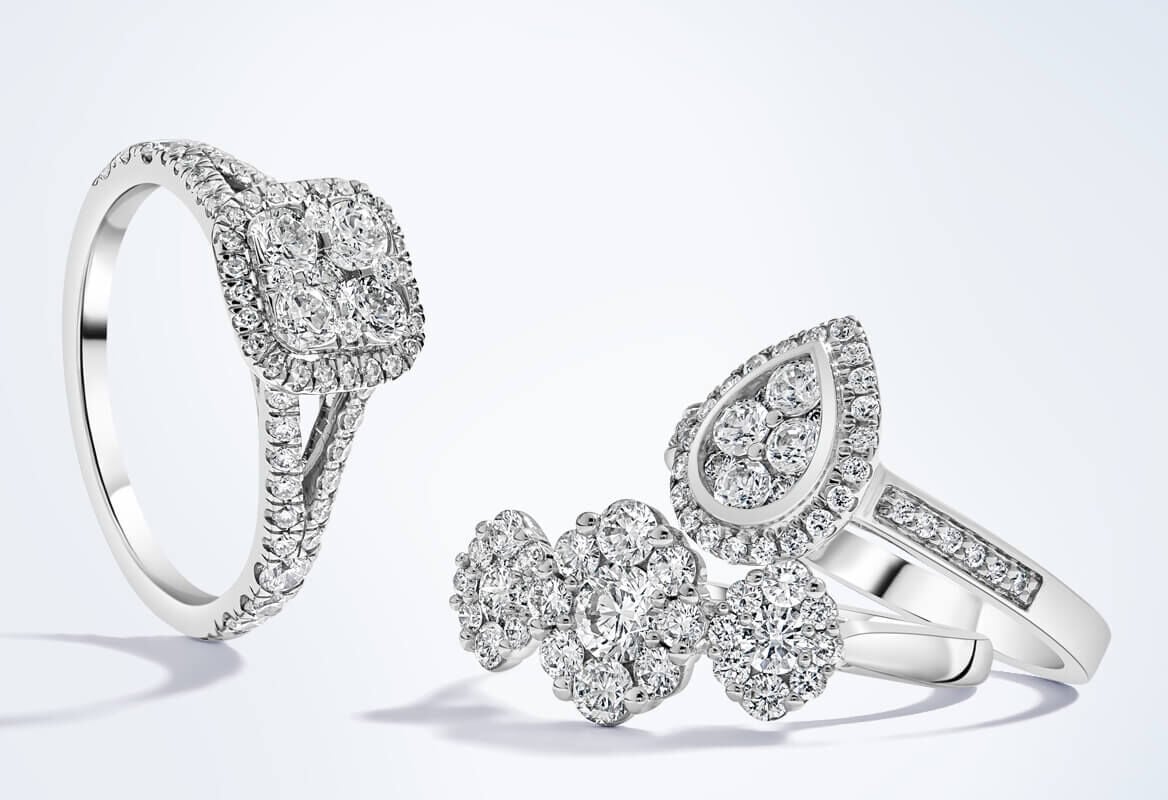Lab Grown Diamonds vs Mined Diamonds: Everything you Need to Know
Ever wondered about the sparkly world of diamonds and the choices you have when it comes to picking that perfect gem?
If you’re stuck between a lab grown or mined diamond, stick with us as we discuss everything you need to know about the differences between them both.
Lab Grown Diamonds vs Mined Diamonds – What’s the Difference?
Lab grown vs mined diamonds – which to go for and why? The difference between lab grown and mined diamonds lies in their origin and creation methods. Lab-grown diamonds are synthetically produced through high pressure high temperature (HPHT) or chemical vapour deposition (CVD), replicating natural diamond-forming conditions. Mined diamonds, on the other hand, are extracted from the Earth's mantle through mining operations. Each type of diamond is chemically identical, sharing the same physical and optical properties.
What are Lab Grown Diamonds?
Lab grown diamonds are diamonds that are created in a laboratory setting rather than being mined from the Earth. These diamonds have the same chemical composition, crystal structure, and physical properties as natural diamonds.
How are Lab Grown Diamonds Made?
Lab-grown diamonds are made through two primary techniques. As mentioned, these are high pressure high temperature (HPHT) and chemical vapor deposition (CVD). In the HPHT method, carbon, along with a metal catalyst, is subjected to extreme pressure and temperature, replicating Earth's mantle conditions. A small seed diamond initiates crystal growth. The CVD method involves a vacuum chamber where a hydrocarbon gas, like methane, is introduced. Carbon atoms are extracted from the gas and deposited layer by layer onto a substrate, typically a thin diamond slice. Both methods yield diamonds with identical properties to natural ones.
Do Lab Grown Diamonds Have Value?
Yes, lab grown diamonds do have value, which is influenced by various factors, including the carat weight, cut, colour, and clarity. But, are lab grown diamonds cheaper? They’re often priced at a lower point than mined diamonds, making them a great option for those looking for a more budget-friendly choice. However, their value also depends on market demand, brand reputation, and the overall quality of the diamond.
Are Mined Diamonds More Valuable?
Generally, mined diamonds are often perceived as more valuable than lab-grown diamonds, but this perception is evolving, and the value of a diamond can be subjective and depend on various factors.
Traditionally, mined diamonds have been highly valued due to their rarity and the geological processes that create them over millions of years. However, as technology has advanced, lab-grown diamonds have become more prevalent. Lab-grown diamonds are typically less expensive to produce, meaning their prices are often lower.
Ultimately, the value of a diamond, whether natural or lab-grown, is influenced by factors such as the Four Cs (carat weight, cut, colour, and clarity), market demand, brand reputation, and individual preferences.
Is a Lab Grown Diamond a Real Diamond?
The question so many people ask – are lab grown diamonds real? Of course they are! Lab grown diamonds are real diamonds that have the same chemical composition, crystal structure, and physical properties as natural diamonds. So, let’s say goodbye to the lab grown diamond vs real diamond debate, as yes, they are just as real as a mined diamond.
Can a Jeweller Tell if a Diamond is Lab Created?
In many cases, jewellers can’t tell if a diamond is lab grown with the naked eye. However, there are certain advanced techniques and instruments that gemmologists and jewellers can use to identify whether a diamond is natural or lab grown.
Fancy Coloured Diamonds
Fancy-coloured diamonds, both lab-grown and mined, offer a unique option for jewellery. They are ideal for individuals seeking distinctive and vibrant additions to their collection. Used in engagement rings, earrings, or pendants, fancy-coloured diamonds add a touch of elegance and individuality to any jewellery piece.
What Are Fancy Coloured Diamonds?
Fancy-coloured diamonds are diamonds that display vivid colours instead of the traditional clear appearance. These captivating gems can be either mined from the earth or created in a lab.
How Are They Created?
In nature, coloured diamonds are formed naturally over millions of years deep within the earth. Their vivid colours arise from trace elements or structural irregularities that occur during their formation.
In a lab, scientists introduce specific elements to carbon in a controlled environment to create different colours:
• Yellow, Orange, Brown: Created by adding nitrogen.
• Blue: Achieved with boron.
• Green: Produced through gamma radiation.
• Pink, Red: Result from high pressure altering the diamond's structure.
What Are the Most Popular Colours?
Among the most popular fancy-coloured diamonds are yellow diamonds, often referred to as canary diamonds. Their bright and appealing look makes them a favorite choice for those seeking a classic yet vibrant piece of jewellery. Yellow diamonds are popular because their striking colour is both eye-catching and relatively common in nature compared to other fancy colours. Lab-grown yellow diamonds replicate this vivid hue, providing an equally appealing option. This combination of natural abundance and vibrant appearance contributes to their widespread popularity in both mined and lab-grown forms.
How Are Fancy Coloured Diamonds Graded?
Fancy-coloured diamonds, both lab-grown or mined, are graded based on the following criteria:
• Hue: The specific colour of the diamond.
• Tone: The lightness or darkness of the colour.
• Saturation: The intensity and purity of the colour.
These factors are categorized into several distinct levels, ranging from the most intense and vivid colours to light and subtle hues. This grading system ensures that both lab-grown and mined diamonds are of equal quality, with the only difference being their creation process. Buyers can select diamonds based on their preferred shade and intensity from a wide spectrum of colour options.
So, whether you go for a lab grown diamond or a mined diamond is up to you. To look at, they’re identical, but lab grown diamonds are perhaps suitable for those with a smaller budget who still want a quality diamond in their preferred size, whilst mine diamonds are a great choice for those who value having a diamond that is one of a kind. Shop our full range of diamond jewellery and pick the perfect piece for you.
BORN
Lab Grown Diamonds from Fields
Born is an expertly curated collection of lab grown diamonds, created with experienced craftmanship and cutting-edge technology. Whether it's for an engagement, or to mark a milestone, a born diamond is the perfect choice to bring joy with each wear.
View and try on our exclusive born collection in 12 of our stores or shop online.
Top 6 Questions On Lab Grown Diamonds
Find out more on lab grown diamonds from our video.
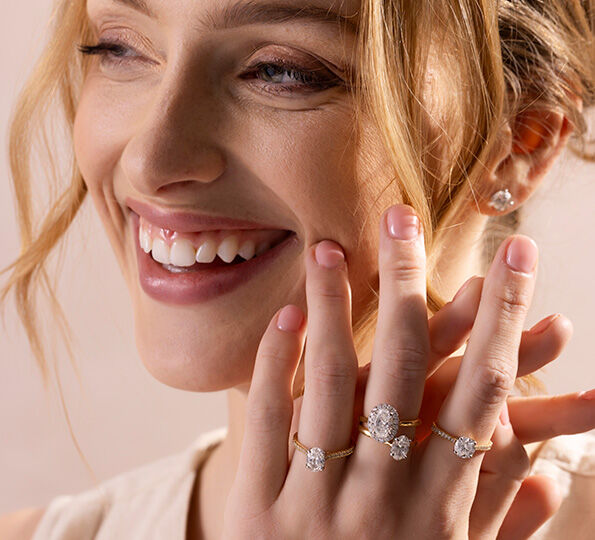
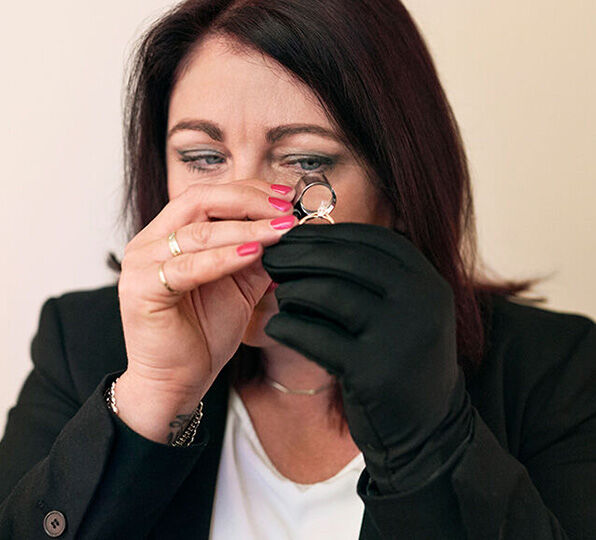
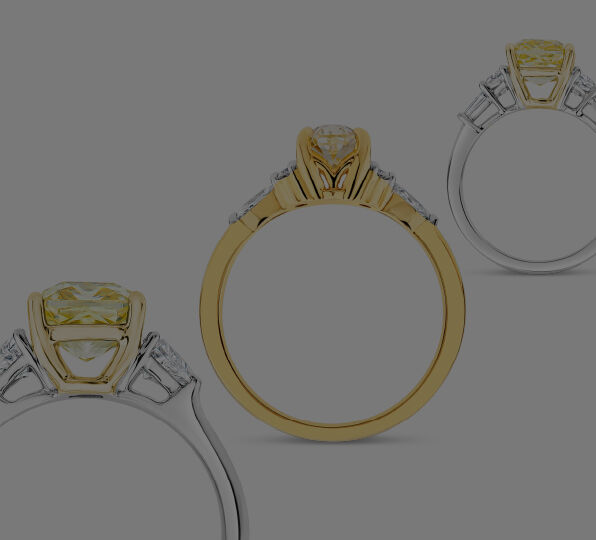
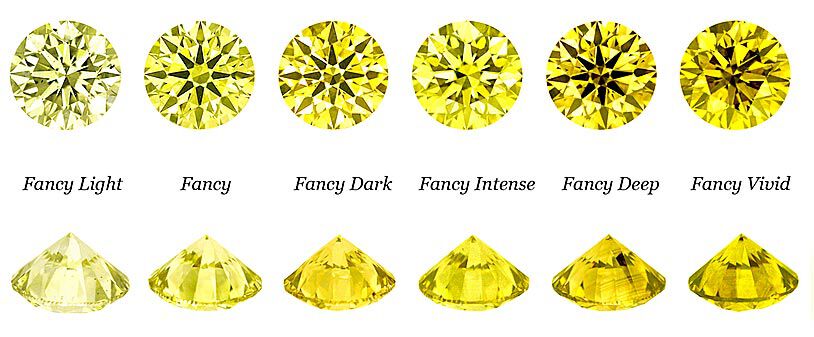
.jpg)
